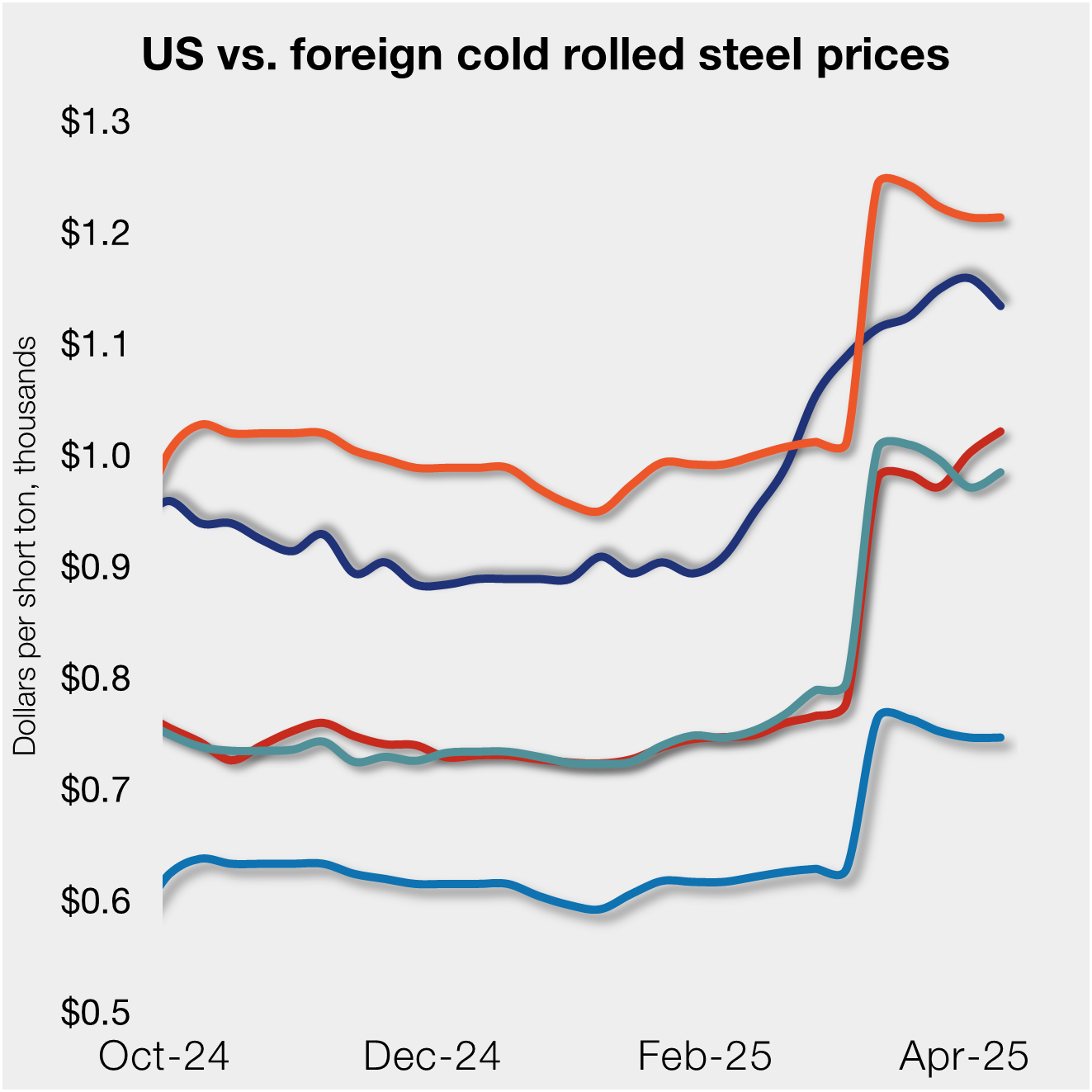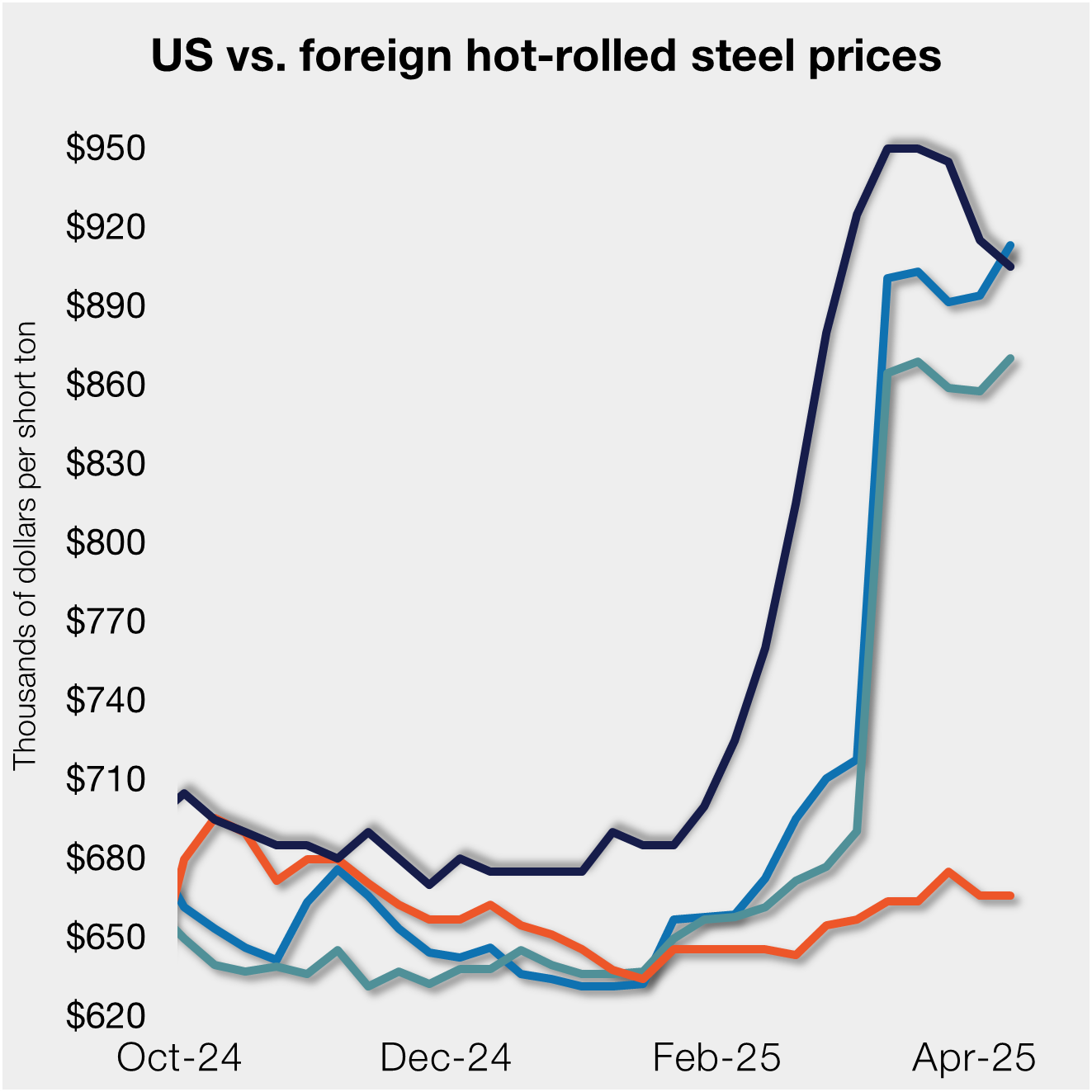Steel Products

"Realism Outweighs Optimism," Says Next Community Chat Guest
Written by Tim Triplett
May 14, 2020
John Anton is apologetic that his forecast for the steel market is so gloomy, “but realism outweighs the optimism,” he tells Steel Market Update. The Associate Director of Pricing and Purchasing at IHS Markit, Anton will be the guest speaker during the next SMU Community Chat webinar, beginning at 11 a.m. ET on Wednesday, May 20.
Unlike some other analysts, Anton and IHS don’t expect a V-shaped recovery for the U.S. economy. Just because the economy plunged so sharply following the government shutdowns to stem the spread of COVID-19 doesn’t mean the upturn will be equally sharp. The economy is more likely to experience a protracted U-shaped recovery that will take years, not months, Anton said, as it undergoes structural, not just cyclical, changes.
Construction is the largest market for steel. Nonresidential construction spending was around $500 billion in Q4 2019. IHS expects it to decline through 2020 to around $360 billion—a 28 percent drop. Recovering at an annual rate of about 6 percent, it won’t reach prior levels until 2026-27. “Even though it is growing, it is climbing out of a deep hole. Much like what happened in 2009, it will take years to recover,” he said.
Another major steel market, fabricated metal products, ranged from the low to mid 90s from 2016-19, indexed at 100 in the year 2012. Due to the virus, fabricated metals production will average an index of 77.7 in 2020, and about the same in 2021. It could be the end of the decade before the index returns to 2019 levels, Anton said.
“Most steel-consuming sectors won’t return to prior levels until the late 20s. They will rise year after year, but when you fall into the Grand Canyon, climbing up the other side takes time.”
How does that translate into steel consumption? Prices will recover faster than volumes, Anton predicts. The mills have done a good job of curtailing production, but there is always the risk they will bring too much idled capacity back online too soon, undercutting prices, as they have done in the past. “They can have price or tons, but they can’t have both,” Anton said.
He predicts steel prices will bottom in May/June and begin rising in Q3, but not by a lot. He expects an average benchmark flat rolled price of $470-480 per short ton in Q3 and $510-520 in Q4 as the economy reopens and demand improves.
He is telling customers it’s time to pull the trigger on inventory. “I don’t see much reason for prices to drop. The mills have done a much better job of matching production with demand. We don’t have the excess inventory we’ve had with other downturns. Maybe prices go down another $10-20 per ton, but it is just as likely they will go up by $40-50.”
Register for Wednesday’s webinar by clicking here.

Tim Triplett
Read more from Tim TriplettLatest in Steel Products

SMU flat-rolled market survey results now available
SMU’s latest steel buyers market survey results are now available on our website to all premium members. After logging in at steelmarketupdate.com, visit the pricing and analysis tab and look under the “survey results” section for “latest survey results.” Past survey results are also available under that selection. If you need help accessing the survey results, or if […]

CRU tariff webinar replay now available
CRU’s latest webinar replay on how Trump’s tariffs affect the global steel market is now available on our website to all members. After logging in at steelmarketupdate.com, visit the community tab and look under the “previous webinars” section of the dropdown menu. You’ll find not only this special CRU webinar but also all past Community […]

US, offshore CRC prices diverge
US cold-rolled (CR) coil prices declined this week, slipping for the first time since early February. Most offshore markets deviated, moving higher this week.

Construction growth slowed in March on tariff woes: Dodge
The decline comes after reaching a record high in January to kickstart the year.

Return of S232 zapped gap between US and EU HR prices, Asian HR remains cheaper
Domestic hot-rolled (HR) coil prices declined this week for a third straight week. Most offshore markets bucked the trend and gained ground. Uncertainty in the US market around tariffs, especially after “Liberation Day,” caused US prices to slip as buyers moved to the sidelines. It’s unclear to date whether the 90-day pause on the more […]

